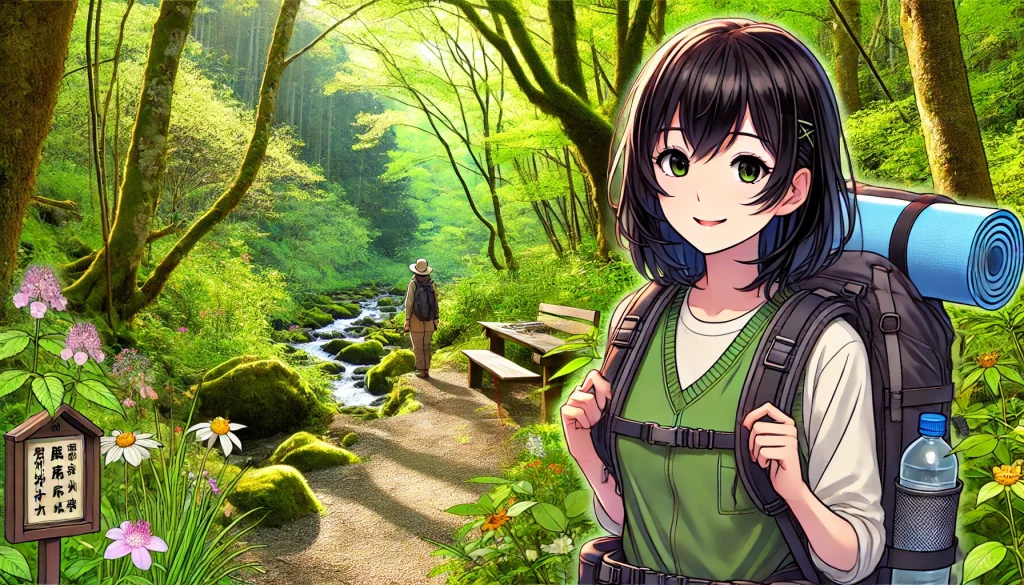Mio’s Introduction to Aokigahara
Hello, I’m Mio! Today, I’d like to introduce you to one of my favorite places, Aokigahara.
Exploring Mysteries and Nature: Aokigahara Forest Trekking
Overview: Aokigahara, also known as the Sea of Trees, is a vast forest located at the northwest base of Mount Fuji. Formed by a volcanic eruption around 1200 years ago, the forest is renowned for its beautiful natural scenery and mysterious atmosphere, attracting many explorers and nature enthusiasts.
History and Fun Facts
While Aokigahara doesn’t directly appear in Japanese myths and legends, its mysterious atmosphere has inspired many stories and fictional works. Formed by the 864 eruption of Mount Fuji, the forest has developed rich vegetation over the centuries and is known for its dense trees and silence, making it a frequent setting for many literary and fictional works【90†source】【91†source】【92†source】.
Spring in Aokigahara
Spring in Aokigahara brings fresh greenery and blooming flowers. The forest is adorned with alpine plants like mizubasho and katakuri, signaling the arrival of spring. It’s a great time for trekking, with the refreshing spring breeze accompanying your walk.
Summer in Aokigahara
Summer in Aokigahara features lush green foliage and cool, shaded paths, providing a pleasant escape from the summer heat. The relatively cool climate attracts many hikers and nature lovers. Summer is also a great time for insect watching and bird watching.
Autumn in Aokigahara
Autumn in Aokigahara is highlighted by stunning autumn foliage. The best time to visit is from mid-October to early November, when the forest is beautifully adorned in red and yellow hues. Hiking in the crisp autumn air provides a pleasant and refreshing experience.
Winter in Aokigahara
Winter in Aokigahara offers serene, snow-covered landscapes. The forest is quiet and less crowded, allowing you to enjoy the natural beauty in peace. Snow-covered lava caves provide a magical and unique experience.
Nearby Attractions
- Ice Cave: A cave where ice can be seen year-round, known for its mystical beauty.
- Wind Cave: A cave with cool breezes even in summer, attracting many visitors.
- Fugaku Wind Cave: A designated natural monument featuring ice pillars and stalagmites inside.
Access
Public Transportation:
- Train and Bus:
- From Tokyo, take the Chuo Main Line to Otsuki Station, then transfer to the Fujikyuko Line to Kawaguchiko Station. From there, take a bus to Aokigahara Forest.
Note: Since Japanese rail and bus schedules are subject to change, please check with the respective railway and bus companies for the most up-to-date information.

- Utsukushigahara:Enjoying the Changing Seasons
- Mount Norikura:Majestic Mountain Scenery
- Aokigahara:the Serenity of Forest and Lake
- Sakurajima:Feeling the Energy of a Volcano
- Nakasendo:Walking the Ancient Road
- Kurobe Gorge:the Beauty of the Gorge
- Lake Toya:Harmony of Forest and Lake
- Tango Peninsula Trekking
- Mount Takao Trekking
- Miura Peninsula